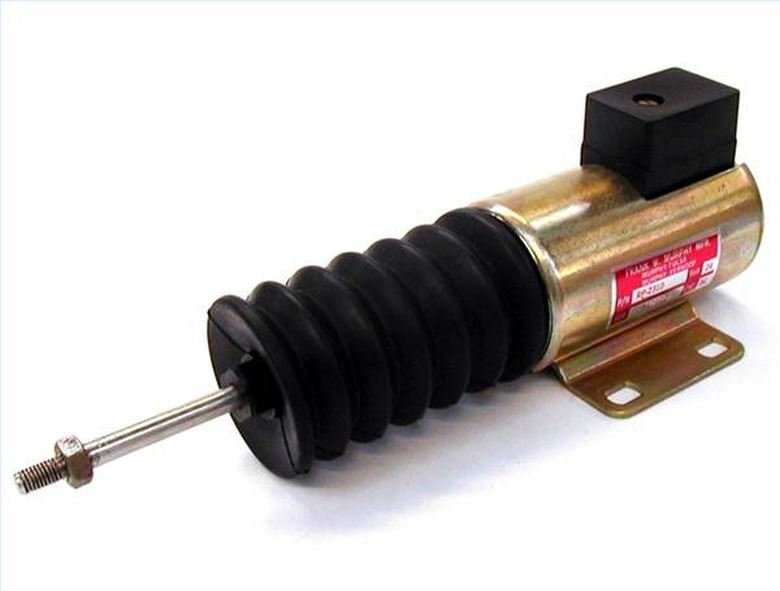AC Vs. DC Solenoids & How They Work
Aspects
Solenoids are devices that are capable of changing electrical energy into mechanical, or linear, energy. The most common type of solenoid is uses the magnetic field created from an electrical current as the trigger for the production of a push or pull that drives mechanical action in objects such as starters, valves, switches and latches.
The simplest type of solenoids rely on two main aspects for their function: an insulated (or enameled) wire, shaped into a tight coil, and a solid rod of either iron or steel. The iron or steel rod is ferromagnetic, a property that allows it, when exposed to electrical current, to function as an electromagnet.
Solenoids aren't exclusively electromagnetic. Other types of solenoids, such as pneumatic solenoids, use air, as opposed to magnetic fields, to create mechanical energy. Hydraulic solenoids use the pressure of hydraulic fluid in a fluid-filled cylinder.
Solenoids that rely on electrical current fall into two main categories–solenoids that rely on AC (alternating current) as the source of power and solenoids that rely on DC (direct current) as the power source.
Function
Function
While AC and DC solenoids use different types of current, they both work in the same basic manner. When the insulated, coiled wire of the solenoid receives electrical current, the magnetic field produced strongly attracts the iron or steel rod. The rod, which is attached to a compression spring, moves into the coil and will remain there until the current is stopped, keeping the spring under pressure the entire time. When the current is turned off, the compressed spring forcefully snaps the rod back into its original position.
The force created by the spring on the rod is what makes the solenoid useful in devices that rely on a number of different parts that must be activated quickly in succession.
Comparison
Comparison
There are a number of differences between AC and DC solenoids. DC solenoids are quieter and function more slowly than AC solenoids. They are also less powerful than AC solenoids.
AC solenoids can run the risk of burning out if they malfunction and remain stuck in the open (full-current) position for too long. The current that runs through an AC solenoid starts with a first rush of extremely strong current, then drops to a lower, normal level. If the solenoid stays open too long and receives too much of this first wave of maximum current, it can permanently damage the device. By contrast, DC solenoids experience no alteration in currents and do not run the risk of being damaged by the current.
DC circuits can utilize AC solenoids without a problem, but DC solenoids cannot be used on other circuits without becoming noisy and overheated.
Cite This Article
MLA
Kerns, Michelle. "AC Vs. DC Solenoids & How They Work" sciencing.com, https://www.sciencing.com/dc-solenoids-how-they-work-5008123/. 13 March 2018.
APA
Kerns, Michelle. (2018, March 13). AC Vs. DC Solenoids & How They Work. sciencing.com. Retrieved from https://www.sciencing.com/dc-solenoids-how-they-work-5008123/
Chicago
Kerns, Michelle. AC Vs. DC Solenoids & How They Work last modified March 24, 2022. https://www.sciencing.com/dc-solenoids-how-they-work-5008123/
